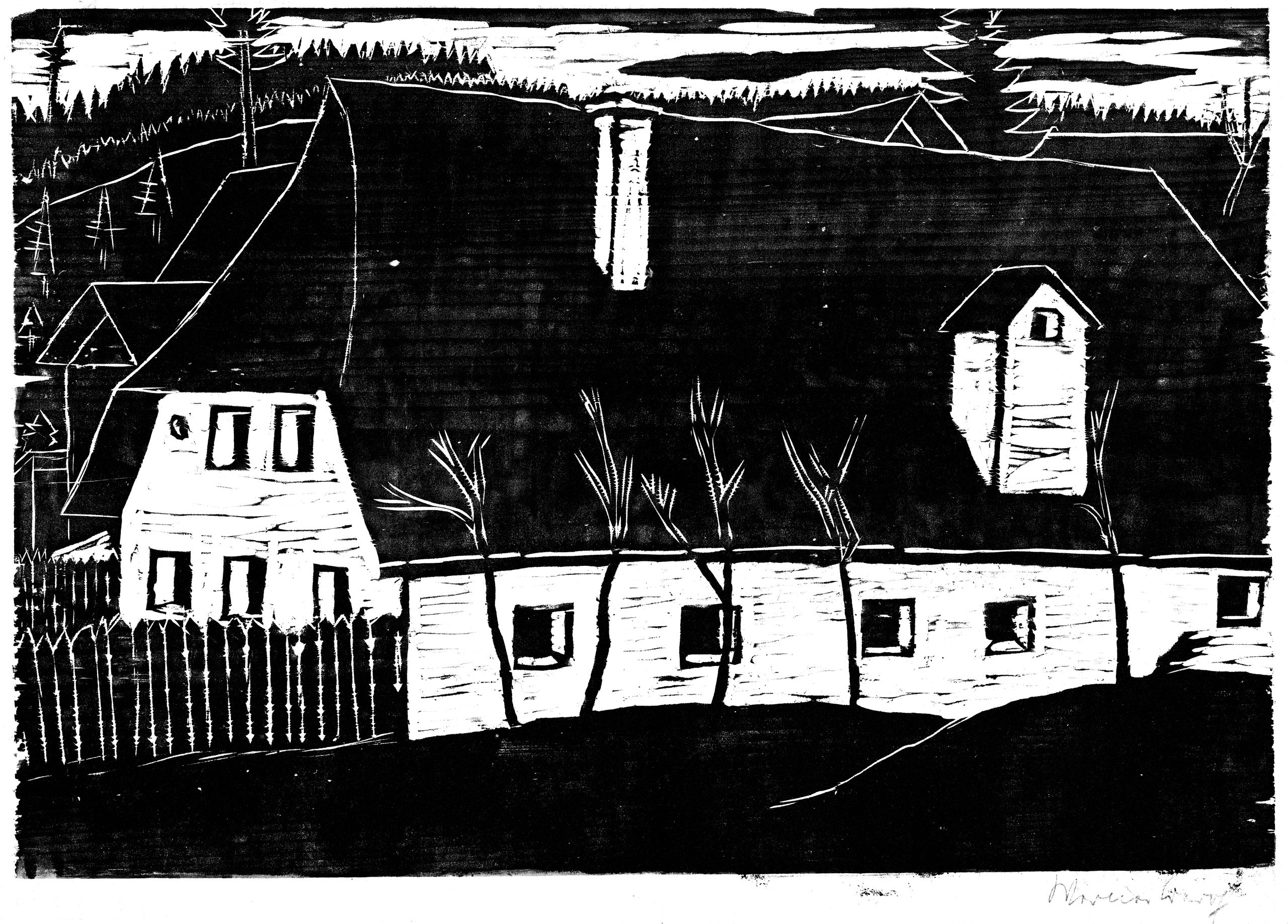Rutarhof

In March of 1931, the 26-year-old artist arrived with his wife and his friend the poet Kurt Sachsse at the mountain farm known as the Rutarhof, where he would live henceforth as a farmer. Born in 1904 in Wuppertal-Elberfeld, Werner Berg had after his schooling initially completed a merchant’s apprenticeship. Later he studied political science in Vienna, where he received his doctorate cum laude. Yet he had yearned since childhood to become a painter, and thus he attended the academies in Vienna and Munich. Extended journeys on foot took him and his later wife Amalie “Mauki” – who had also taken her doctorate in political science – through Austria’s alpine landscape.
During their travels, both of them grew certain that they would like to settle on the land as farmers and lead a life of simplicity. In this simple depiction in black and white surfaces of the small farm that he had just acquired, Berg for the first time left behind both his academic training and the uneasy restlessness of the Expressionist woodcut.
From the time when Werner Berg settled at the Rutarhof farm onward, he made the woodcut – the oldest form of printing – his exclusive form of graphic expression. Printing by hand without even a printing press, he found that the woodcut corresponded best with the primeval form of life he had chosen.
Although this woodcut was preceded by numerous others, Werner Berg gave it the work number 1. Doubtlessly, he also wanted to underline the significance of his new life on the isolated farm. Since the establishment of the Werner Berg Galerie in 1968, the collection’s hanging has always begun with this woodcut.